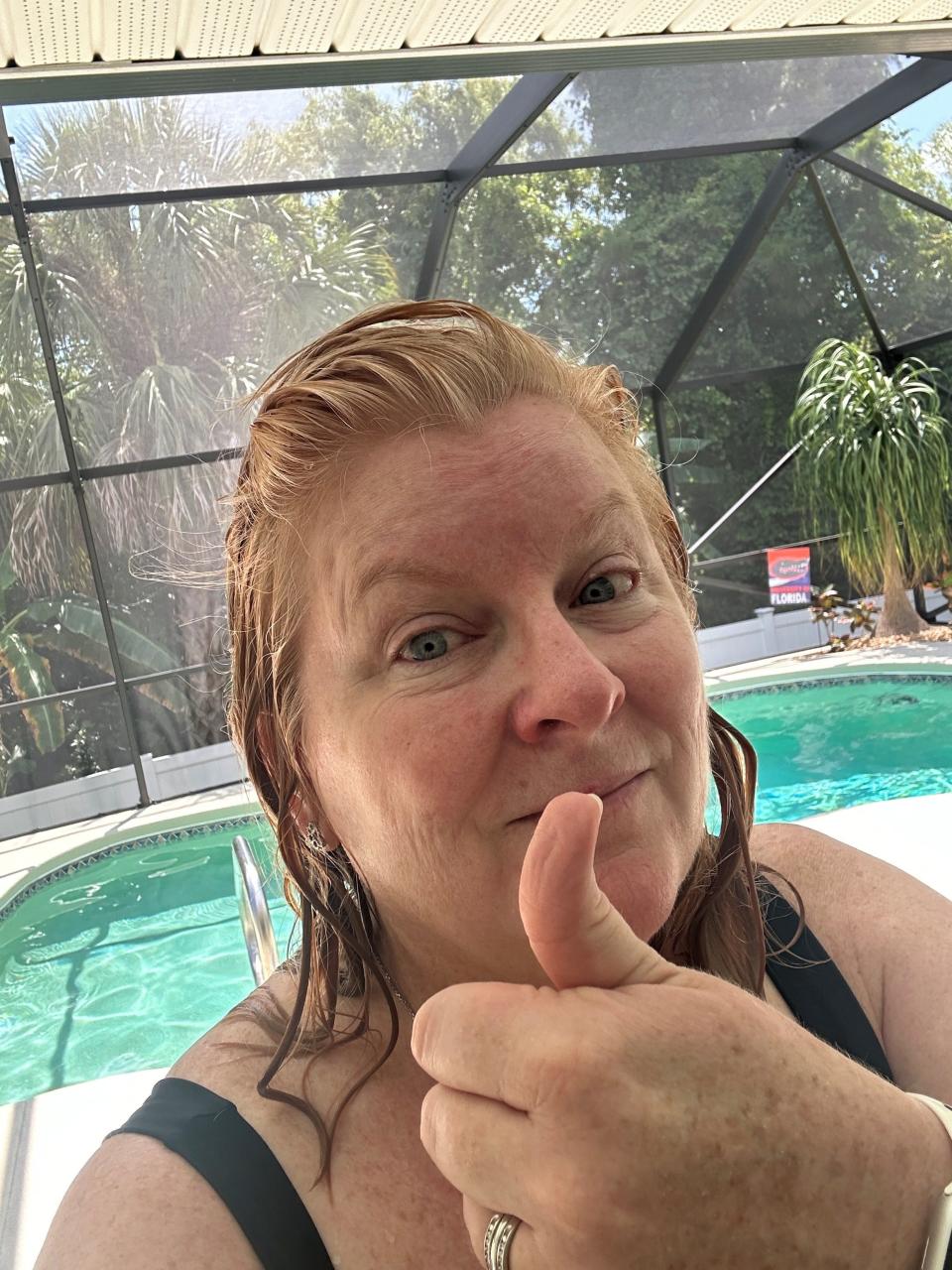Swimming to raise awareness: Everyone should know drownings happen quickly | Suzy Leonard
I remember the moment swimming clicked for me. I’d mastered putting my face in the water and blowing bubbles during summer swim lessons, but the concept of moving my arms and kicking my feet still made little sense.
Then, one Saturday afternoon when I was about 5, my father held me steady in the cool waters of Central Louisiana’s Ouiska Chitto Creek until I mustered the courage to dogpaddle away with the gentle current.
I’ve loved the water since, and now I’ve accepted the challenge to swim 15 miles for the American Red Cross in June to raise money and awareness so others can enjoy the water as much as I do.

First, some background info.
My good friend Connie Harvey, who lives in Cocoa Village, is passionate about water safety. As director of the American Red Cross Aquatics Centennial Campaign, her work takes her across the country setting up water competency programs in communities with high drowning rates.
The Centennial Campaign began in 2014 to celebrate the 100th anniversary of the Red Cross adding water safety to its mission.
The campaign has been so successful, it’s now in its 10th year, with no signs of slowing down.
Money raised through the 15-mile swim challenge goes to the campaign.
'Everyone should know'
Swimming was a given for me; everyone in our household learned to swim. Not all kids are so lucky. Their parents don’t swim. They don’t have access to a back yard pool. They don’t have a ride to the community pool. They don’t have money for swim lessons.
Many families don’t understand the importance of water safety ... until it’s too late.
Statistics from the Center for Disease Control tell a frightening truth:
Drowning is the leading cause of death for children 1 to 4.
For children 5-14, drowning is the second leading cause of death after motor vehicle crashes.
There are 4,000 fatal unintentional drownings every year in the United States.
There are 8,000 nonfatal drownings annually. (Yes, drownings can be nonfatal, with results ranging from no injury to brain damage and permanent disability.)
For Black people younger than 30, drowning rates are 1.5 times higher than for white people the same ages. Rates are 2 times higher for American Indian and Alaskan Native people.
In swimming pools, drowning rates for Black children ages 1-14 are 7.6 times higher than for white children.
The stories Connie shares are heartbreaking. The one thing she hears over and over from parents? “I didn’t know it could happen to me.”
That’s why I’m participating in this challenge. Everyone should know.
More: Retirement 101: First, learn how to play pickleball | Suzy Leonard
Drowning happens quickly and silently, and while rates may be higher among people of color, it doesn’t discriminate. It happens in Grandma’s pool and during swim practice. Children drown on vacation and when they’re supposed to be in bed taking an afternoon nap.
This isn’t going to be easy for me. I’m a competent swimmer, but laps and distance have never been my thing. I prefer floating on my back and looking up at the sky.
I started a couple of weeks early to make sure I finish the miles, and it’s a good thing. The pool in my back yard is small, only about 25 feet across. That’s 106 laps per mile. After two swim sessions, I’ve made it 66 laps. Only 1,524 to go.
Wish me luck.
For more information about the Swim 15 Miles for the Red Cross challenge, visit Facebook.com/suzyflemingleonard to find a link to Suzy’s event page. Email suzy@321creates.com.
This article originally appeared on Florida Today: I'm diving into American Red Cross water safety campaign | Leonard

